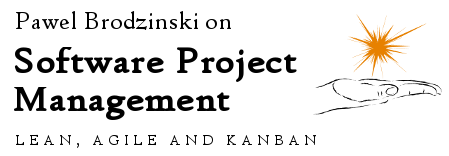One of recurring themes in my discussions on different methods and practices we use in our professional lives is: understand why and how the thing works so you can safely adjust it or substitute it with something else and get the same effect.
A common example is stand-ups. Why are stand-ups limited to short time (15 minutes)? Why were they intended to be done with people standing and not sitting? Why do we answer three standard questions? And finally, how does it help us?
Can you answer these questions from the top of your head?
I know, it isn’t rocket science whatsoever. Yet I know many leaders, and even more teams, that would struggle to answer them reasonably.
Such understanding of tools we use isn’t crucial only because it means you can go beyond by-the-book approach with methods and practices you adopt. It also is a signal that you know and use learn-adapt-experiment-repeat pattern. And this is a game-changer in terms of improving the way you and your team works.
Let me share a story. I had a management retreat today, which was basically dedicated to discussion over handful of topics that are important for us. During the retreat’s summary a bit of feedback I received a couple of times was about the method of finishing discussions we used.
Basically we had a Kanban board to organize subjects to discuss and at any given moment we had 1 (if any) subject that was “ongoing.” Now, if anyone out of 14 people in a room felt that discussion wasn’t adding value anymore or was meandering toward something totally different, they put a small sticky on subject’s index card. Once we had 3 stickies the discussion was over and could go further later, meaning during a break or after the retreat, in a group of people interested.
My goal was simply not to see a dozen people bored to death only because there still are 2 folks who are willing to continue discussing something deadly important to them. At the same time I didn’t want to cut the discussion in half only because a timeslot dedicated for it was over, thus no timeslots whatsoever.
Although no one taught me the method directly I’d lie if I said that I came up with the idea. Actually a few days ago I read Benjamin Mitchell’s post about two hands rule – a method one can use to cut irrelevant discussions during stand-ups.
What I learned from Benjamin’s post wasn’t a stand-up-related technique. I learned the mechanism and understood how it worked. I didn’t dismiss the idea only because I don’t regularly attend any stand-up these days.
Eventually, just after a few days, it came up handy. It required some changes in details as forcing people to keep their hands up for 20 minutes could be considered mobbing, but in its heart it is exactly the same tool.
What happened here is I learned something new, adapted it as needed and experimented (I didn’t know how it would go). Finally, I learned something new. It seems I’m already at the beginning of the next iteration of the pattern. And I have a new tool in my toolbox. One which comes handy with things I regularly do.
I’m two steps ahead. How about you? Are you there too or you still are following the book?


 Subscribe RSS feed
Subscribe RSS feed Follow on Twitter
Follow on Twitter Subscribe by email
Subscribe by email



0 comments… add one